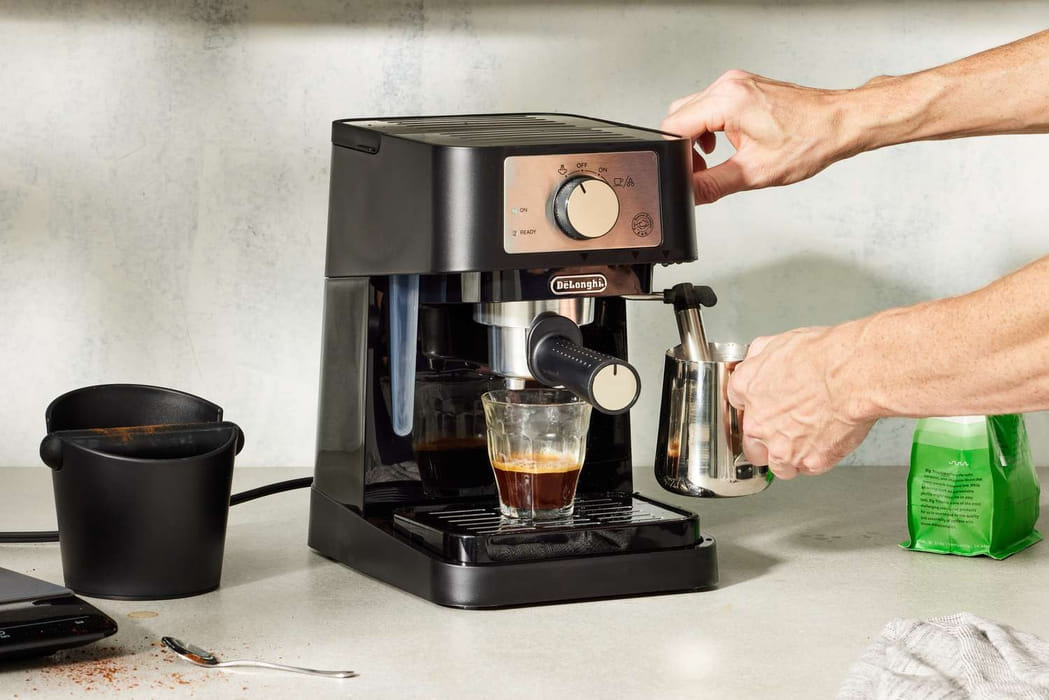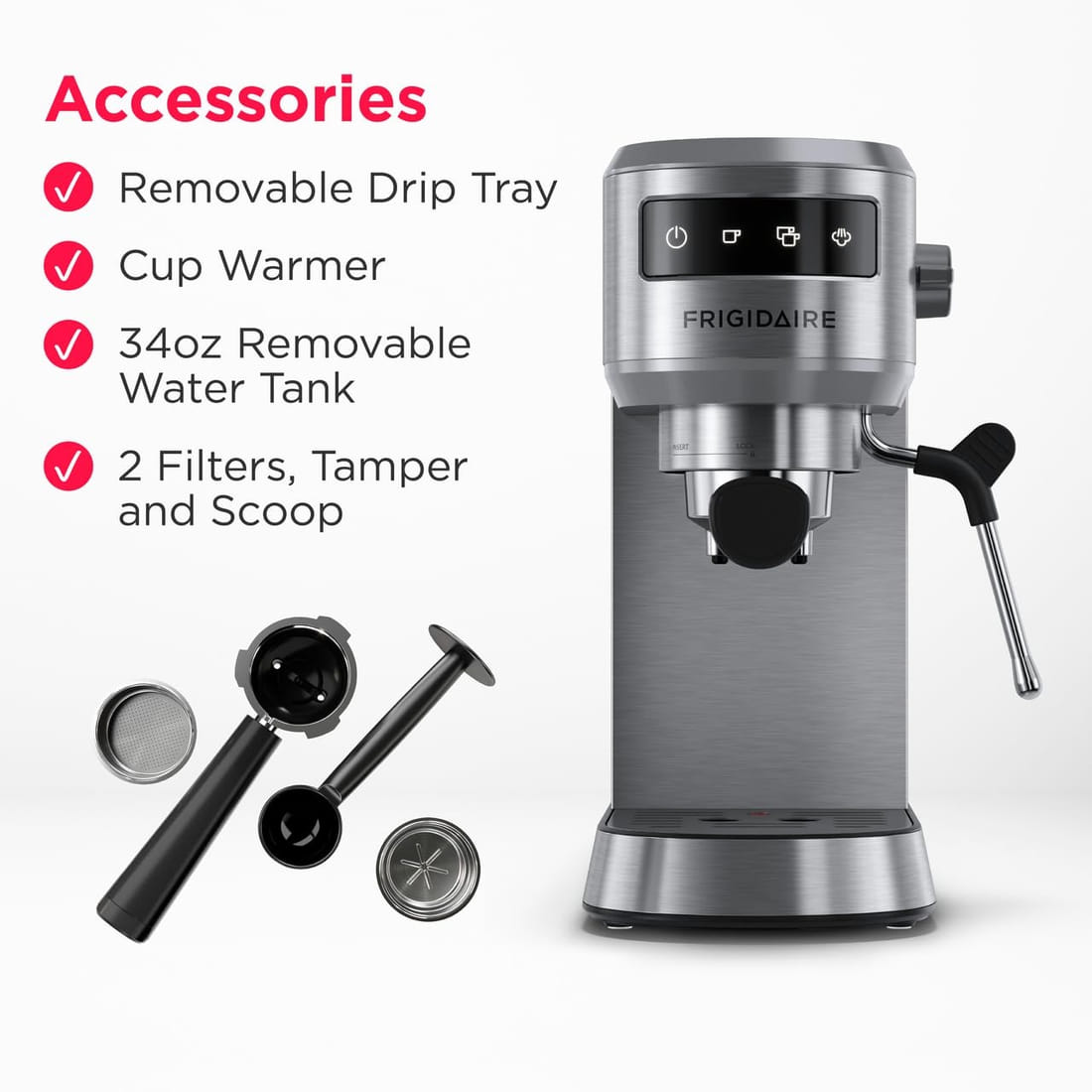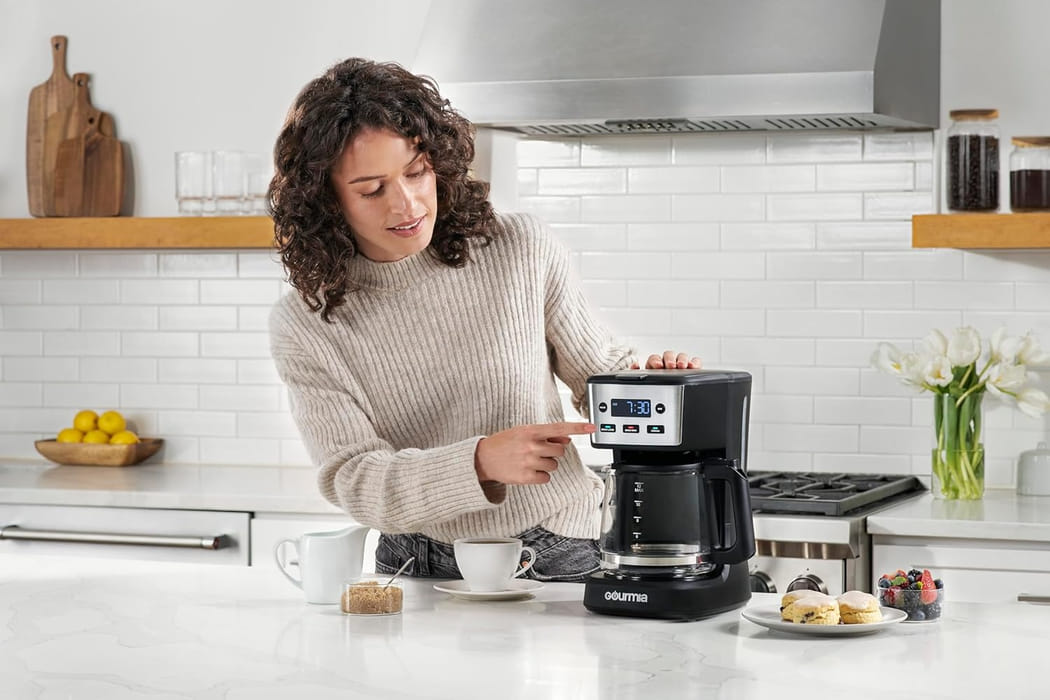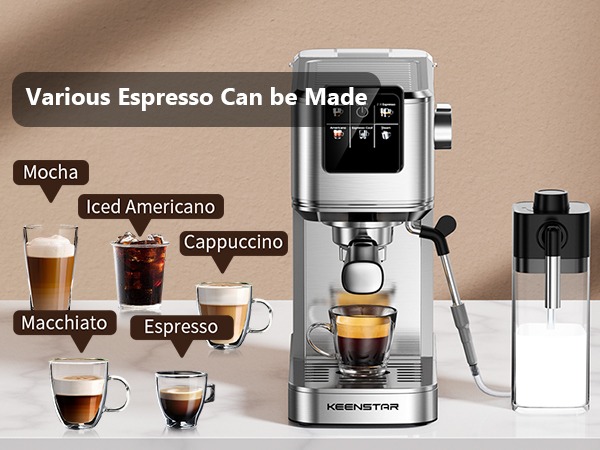Espresso is the cornerstone of truly exceptional coffee that you can savor right at home with the right equipment. Investing in a high-quality espresso machine empowers you to craft café-style beverages that can elevate your daily coffee ritual. Not only do these machines provide consistent flavor and body, but they also inspire creativity in your brewing techniques. While the learning curve can be steep, mastering your espresso-making skills can be incredibly rewarding, resulting in delicious, barista-level drinks that impress family and friends without needing to step foot inside a café.
Key Takeaways:
- Quality is important: Investing in a high-quality espresso machine can greatly enhance your coffee experience, ensuring barista-level results at home.
- Learning curve: Mastering the techniques of espresso extraction, including grind size, tamping pressure, and milk frothing, is crucial for achieving perfect shots.
- Variety of options: There are various types of espresso machines available, from manual to fully automatic, allowing you to choose based on your preferences and skill level.
Understanding Espresso Machines
For aspiring home baristas, understanding espresso machines is vital for brewing that perfect cup. Each machine varies in functionality, design, and price, which means investing in the right one can elevate your coffee experience. You can check out the 7 Best Espresso Machines for Specialty Coffee at Home to find the ideal choice for your kitchen.
Types of Espresso Machines
With a variety of options available, selecting the right espresso machine encompasses several types:
| Manual | Requires skilled operation; allows control over the entire brewing process. |
| Semiautomatic | Offers a balance of automation and control, making it user-friendly yet customizable. |
| Automatic | Automates the brewing process and is ideal for consistency and ease of use. |
| Superautomatic | Fully automates the process, from grinding to brewing, perfect for convenience seekers. |
| Capsule | Utilizes pre-packaged coffee pods for quick and easy espresso, although less customizable. |
This overview will help you determine which type aligns with your coffee-making aspirations.

Key Features to Consider
Features to look for when selecting an espresso machine might include:
- Pressure – Optimal pressure for balanced extraction.
- Temperature Control – Consistent brewing temperatures.
- Grinding Options – Built-in grinder for fresh coffee.
- Frothing Capability – Steam wand for frothy milk.
- Build Quality – Sturdy materials for longevity.
Assume that these considerations will significantly impact how well your espresso machine performs.
To further guide your decision-making, consider these additional key features:
- Size and Design – Ensure it fits your kitchen space.
- Ease of Cleaning – Maintenance plays a big role in usability.
- Price Point – Determine a budget that suits your needs.
- Warranty and Support – Reliable service for repairs and issues.
- Customer Reviews – Insight into the experiences of other users.
Assume that these details will help you find a machine that meets your specific coffee preferences.
Choosing the Right Machine
You should evaluate your needs when selecting an espresso machine, considering factors like ease of use, features, and your coffee preferences. Researching The Best Espresso Machines for Beginners, Coffee Nerds … can help guide your decision, ensuring you find a machine that meets your expectations without overwhelming you with unnecessary features.
Budget Considerations
For many, the budget is a crucial factor when purchasing an espresso machine. Prices can range significantly, so it’s crucial to strike a balance between quality and affordability. Consider investing a little more in a reliable model that will last longer and deliver superior coffee, rather than opting for a cheaper, lower-quality machine.
Space and Size
Considerations regarding space are crucial before buying an espresso machine. It’s important to measure the available counter space in your kitchen and ensure that the machine fits comfortably without overcrowding your setup. Moreover, a larger machine may require more maintenance and can produce additional noise, so assess your needs realistically based on your kitchen environment.
This understanding of your space will not only help you choose the right machine but also improve your daily routine. A compact espresso machine is perfect for small kitchens, while a larger model might offer more features and better performance if you have ample counter space. Keep in mind that the right choice should not only fit your kitchen but also enhance your coffee-making experience, ensuring you enjoy every cup without feeling cramped or overwhelmed.
Essential Accessories for Home Baristas
After investing in a quality espresso machine, the journey to achieving barista-level coffee at home requires necessary accessories. These tools will not only enhance your coffee-making experience but also ensure consistency in flavor and quality. From grinders to tampers and scales, having the right equipment is crucial for perfecting your brewing technique and elevating your coffee game.

Grinders
With the right grinder, you can unlock the full potential of your coffee beans. A good grinder allows you to achieve the ideal grind size tailored specifically for your espresso machine, ensuring optimal extraction and rich flavor. Investing in a burr grinder is recommended, as it provides uniformity and precision necessary for brewing barista-quality espresso.
Tamper and Scale
One of the most important accessories you need is a tamper and a scale to measure your coffee accurately. These tools ensure consistent pressure and weight, contributing to a balanced extraction for your espresso shots.
Accessories like a quality tamper and a digital scale are fundamental for achieving precision in your brewing process. A tamper allows you to compress the coffee grounds evenly, ensuring that each shot is extracted uniformly, preventing under or over-extraction. Meanwhile, a scale helps you measure the exact amount of coffee and water, which is necessary for maintaining consistency in flavor. By using these tools, you can replicate the same delicious results cup after cup, making them indispensable for your home barista setup.
Mastering the Art of Brewing
Many coffee enthusiasts strive to achieve barista-level brews at home, and understanding the intricacies of espresso is crucial. To get started, check out the Best Home Espresso Machines for Baristas? which feature a range of options to enhance your brewing experience.
Coffee Beans and Freshness
Brewing great coffee begins with the beans you choose. Always opt for high-quality, freshly roasted beans, as they significantly impact your espresso’s flavor profile. Aim to use beans within two weeks of their roast date for optimal freshness, ensuring that you unlock the maximum potential in every cup.
Brewing Techniques
Techniques in espresso brewing can make or break your coffee experience. Experiment with variables such as grind size, dosage, and extraction time to find the perfect balance for your palate. The right grind should complement your machine and your preferred coffee style, so don’t hesitate to adjust these variables until you pinpoint that perfect brew.
To achieve the best possible results, pay attention to grind consistency, as it affects the extraction rate. A too coarse grind will yield a weak shot, while a too fine grind may lead to bitterness or over-extraction. Don’t forget to maintain a consistent extraction time, ideally between 25-30 seconds, to capture the full spectrum of flavors in your espresso. Investing time and effort into refining your brewing techniques will help you savor every cup and elevate your home coffee experience.
Maintenance and Cleaning
All espresso machines require proper maintenance and cleaning to ensure that you always enjoy barista-level quality coffee. Regularly performing these tasks will not only enhance your brewing experience but also extend the lifespan of your machine. Create a routine that incorporates both daily and long-term upkeep to guarantee that your espresso machine remains in optimal condition.
Daily Care
Cleaning your espresso machine daily is necessary for preventing buildup and maintaining flavor integrity. After each use, wipe down the exterior and clean the portafilter and group head to remove coffee residue. Additionally, run a water cycle through the machine to flush out any remaining oils or grounds, keeping your espresso tasting fresh and delicious.

Long-term Upkeep
For optimal performance and longevity, your espresso machine requires long-term upkeep. You should regularly descale the machine to prevent mineral buildup, which can impair functionality. Inspect and replace any worn parts, and ensure that all components are functioning correctly. Regular maintenance will not only keep your brew tasting sublime but also safeguard against unexpected malfunctions that could be costly.
It’s crucial to keep in mind that neglecting these maintenance routines can lead to serious issues over time. Regular descaling prevents clogs and damage to your machine, while checking for wear helps avoid sudden failures that can be both frustrating and expensive. By dedicating just a small amount of time to long-term upkeep, you will enjoy consistently great coffee and extend the life of your espresso machine significantly.
Troubleshooting Common Issues
Unlike the smooth operation you expect from your espresso machine, various issues can arise that disrupt your brewing experience. Understanding these potential problems is the first step to resolving them, ensuring you can continue to create barista-level coffee from the comfort of home. By familiarizing yourself with common issues and their solutions, you can avoid frustrating interruptions in your daily coffee routine.
Common Problems
With regular use, you may encounter several issues such as inconsistent extraction, the presence of clogs, or even steam wand malfunctions. These problems can impact the quality of your espresso, leading to underwhelming results despite your best efforts.
Solutions and Tips
Tips for troubleshooting include addressing clogs by regularly cleaning your machine and checking the grind size to ensure proper extraction. Additionally, monitor your water temperature and pressure for optimal brewing conditions. Consider the following:
- Flushing your machine weekly to prevent build-up.
- Checking and calibrating your grinder for consistent fineness.
- Using filtered water to minimize mineral deposits.
This will ensure your espresso machine remains in peak condition, allowing for a consistently excellent cup of coffee.
Solutions to common espresso machine problems can greatly improve your coffee-making experience. Make sure to regularly inspect key components such as the brew group and water reservoir to prevent potential issues. If you notice drop-in performance, perform maintenance like deep cleaning the machine and replacing worn-out parts. Consider the following:
- Descaling your machine every few months.
- Inspecting the steam wand for clogs and buildup.
- Storing your beans in an airtight container for optimal freshness.
This comprehensive approach will keep your espresso machine performing well and delivering delicious beverages every time.
Final Words
Drawing together all the imperative elements we’ve discussed, investing in an espresso machine can transform your home coffee experience into one that rivals your favorite café. By selecting a machine that suits your skill level and preferences, you can craft barista-quality coffee every morning. With a little practice and the right technique, you will be enjoying rich, flavorful espressos, lattes, and cappuccinos right in your kitchen. Elevate your coffee game and delight your senses with the perfect cup tailored to your taste.

Q: What features should I look for in an espresso machine to achieve barista-level coffee at home?
A: When seeking an espresso machine that can deliver barista-level coffee, consider the following key features:
1. Brew Pressure: Look for a machine that can maintain a brew pressure of 9 bars or more for optimal espresso extraction.
2. Temperature Control: Machines with PID (Proportional-Integral-Derivative) temperature control help ensure the water temperature is consistent, crucial for great extraction.
3. Grinder Quality: A built-in conical burr grinder or a high-quality external grinder will ensure that coffee beans are ground to the right consistency for espresso, enhancing taste and aroma.
4. Steam Wand: A powerful steam wand for frothing milk will allow you to create creamy microfoam, important for lattes and cappuccinos.
5. Size and Build Quality: Consider the build quality and size of the machine to ensure it fits your kitchen space while being durable enough for regular use.
By prioritizing these features, you can significantly improve your chances of crafting barista-level espresso at home.
Q: How do I properly maintain my espresso machine to ensure longevity and optimal performance?
A: Maintaining your espresso machine is crucial for its longevity and optimal performance. Here are key maintenance practices:
1. Daily Cleaning: After each use, purge the steam wand to remove milk residue and flush the group head with water to clear coffee oils and grounds.
2. Weekly Backflushing: If your machine has a three-way solenoid valve, perform a backflush using a blind filter basket and espresso machine detergent to clean the group head.
3. Regular Descaling: Depending on your water hardness, descale your machine every 1-3 months to prevent mineral buildup, which can affect performance and taste.
4. Inspect and Replace Parts: Regularly check the gaskets and screens, replacing them as needed to maintain an effective seal and extraction.
5. Keep the Grinder Clean: Clean the grinder periodically to remove old coffee grounds, as leftover coffee can become rancid and affect taste.
By adhering to these maintenance steps, you can ensure your espresso machine stays in top condition for years to come.
Q: What types of coffee beans are best for making espresso, and how should I store them?
A: For making espresso, the best coffee beans are typically medium to dark roasts, as they tend to produce a rich, bold flavor with a thick crema. Look for beans labeled as espresso or those intended for espresso brewing. Here are some tips on bean selection and storage:
1. Bean Origin: Single-origin beans can provide unique flavors, while blends are often more balanced. Experiment to find your preference.
2. Freshness: Always use freshly roasted beans, ideally within a month of their roast date, as coffee flavor diminishes over time.
3. Storage: Store your beans in an airtight container in a cool, dark place to preserve freshness. Avoid direct sunlight, moisture, and changes in temperature.
4. Grind Just Before Brewing: For the best flavor, grind your coffee just before preparing your espresso, using a burr grinder for consistent particle size.
By selecting high-quality beans and practicing proper storage, you can enhance your espresso experience and achieve barista-level coffee at home.
 https://bistrovivant.com is a participant in the Amazon Services LLC Associates Program, an affiliate advertising program designed to provide a means for website owners to earn advertising fees by advertising and linking to Amazon (.com,.co.uk,.ca, etc.) and any other website that may be affiliated with the Amazon Service LLC Associates Program. As an Amazon Associate, I earn from qualifying purchases.
https://bistrovivant.com is a participant in the Amazon Services LLC Associates Program, an affiliate advertising program designed to provide a means for website owners to earn advertising fees by advertising and linking to Amazon (.com,.co.uk,.ca, etc.) and any other website that may be affiliated with the Amazon Service LLC Associates Program. As an Amazon Associate, I earn from qualifying purchases.

